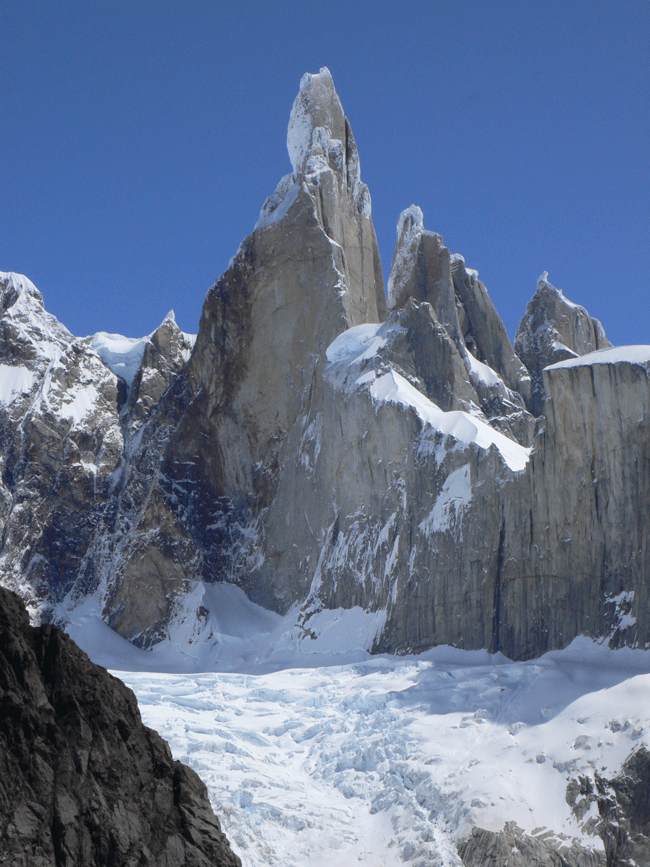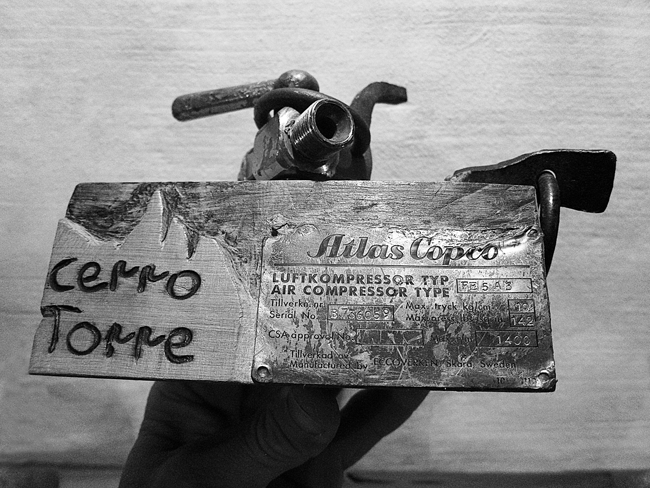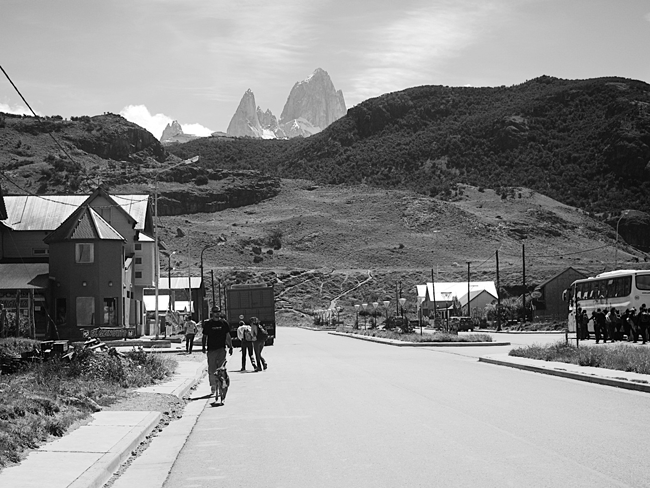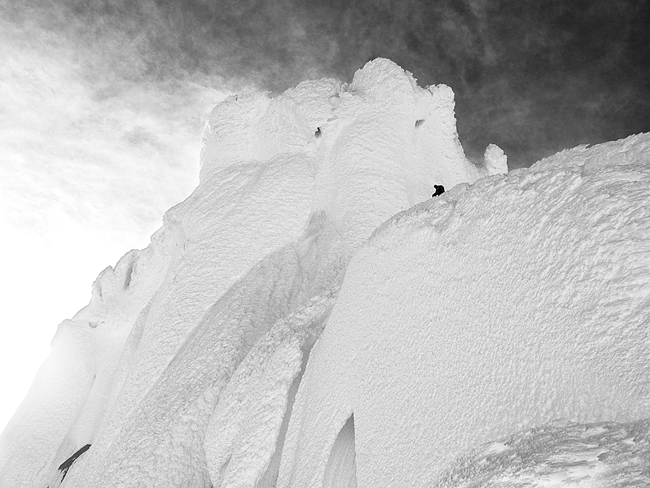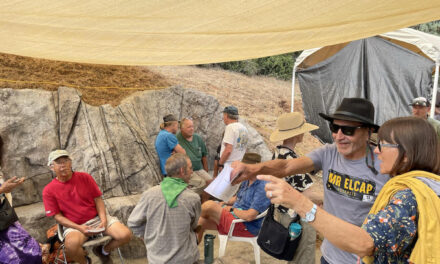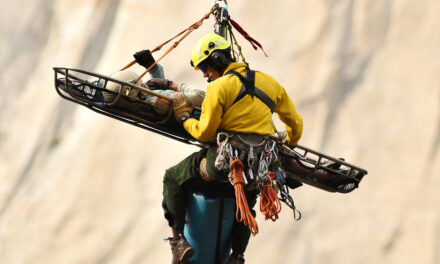- Inner Space: What We All Seek in the Great Outdoors - 06/28/2024
- Editor’s Note #132 // The Hurt Cycle - 02/15/2024
- Editor’s Note // Blessed are the frequency holders - 11/20/2023
Alpinist Kelly Cordes examines the dramatic history of Cerro Torre
By Matt Niswonger
Most California climbers are familiar with Cerro Torre, an iconic spire of rock in southern Patagonia. The spire is part of the massif depicted on the logo for one of the most well respected brands in America – you guessed it, California-based Patagonia clothing.
Besides being one of the most spectacular looking and dangerous mountains on earth, Cerro Torre has been shrouded in controversy for over fifty years, and is the subject of the most infamous lie in climbing history. In his new book The Tower: A Chronicle of Climbing and Controversy on Cerro Torre (published by Patagonia), Colorado based alpinist Kelly Cordes puts together a fantastically researched presentation of the entire sordid history – starting with the fraudulent first ascent by Cesare Maestri.
In 1959 Maestri claimed that an avalanche swept his climbing partner Toni Egger to his death along with a camera that held proof of their climb. Maestri was taken at his word and he became a mountaineering hero and a household name in Italy. At the time experienced mountaineers were incredulous that any human could ascend such a deadly looking and futuristic big wall, but initially all such doubts were kept hidden in the shadows.

Just below the aptly named Col of Hope, about halfway up Cerro Torre, with the wild rime-ice formations of the west face route rising above. (Kelly Cordes)
In 1970 Italian alpinist Carlo Mauri and a team of climbers retreated from the west face after a grim campaign in icy conditions. Upon returning to Italy he famously made a pointed remark to the national media:
“We now return safe and sound from the impossible Cerro Torre.” This statement was a shot across Cesare Maestri’s bow and the first public challenge to his claimed 1959 first ascent.
Later in 1970 Maestri returned to Cerro Torre, this time with a portable compressor supplied by one of his sponsors. Grid bolting his way up, Maestri installed hundreds of steel bolts into the vertical granite flanks of Cerro Torre, raising the ire of critics who called the bolted ascent a desecration and an engineering feat that had little to do with real climbing. With this amateurish bolt-on route using tactics that were far beneath his claimed 1959 tour de force, Maestri did little to bolster his credibility. The bolted climb later became known as the “Compressor Route,” and it received dozens of ascents in the ensuing decades.
Upon returning home, Cesare Maestri issued his famous retort to Mauri: “Impossible mountains do not exist, but only mountaineers who are not able to climb them.”

The Torre Group rising from the ice cap (Cerro Torre is the most prominent), as seen during a descent of neighboring Fitz Roy. (Kelly Cordes)
The stage was set for an entrenched debate that continued for decades. For Maestri, the growing numbers of deniers were simply in league with lesser mountaineers who were jealous of his 1959 climb and amounted to nothing more than jealous detractors.
In 2005 Italian climbers Ermanno Salvaterra, Rolando Garibotti and Alessandro Beltrami, after many attempts by world-class Alpinists, put up a confirmed route on the face that Maestri claimed to have climbed in 1959. They did not find any evidence of previous climbing above the initial 300 meters, and found the features higher up to be significantly different from Maestri’s original description.
Salvaterra and Garibotti in particular have become outspoken critics over the years. After their 2005 ascent they were nominated for the prestigious Piolet d’Or, a French award for the best climb of the year. Maestri’s lawyer wrote a letter of protest, saying the Italians shouldn’t receive an award for merely following his client’s previous line.
But the lack of any evidence of Maestri’s ascent above a gear cache near the base of the mountain was the final straw in the court of public opinion. The 2005 ascent was the tipping point that left Maestri almost completely isolated and generally regarded as the progenitor of one of mountaineering’s greatest lies.

Maestri’s rusting old compressor, still lashed to the headwall atop Cerro Torre’s southeast ridge. (Kelly Cordes)
In 2012, American Hayden Kennedy and Canadian Jason Kruk made a “fair-means” ascent of the Compressor Route, meaning they did not use Maestri’s bolts except for belay purposes. On the way back down, Kennedy and Kruk chopped 120 of the bolts from the 1970 Compressor Route climb.
The residents of El Chalten, the Argentine town at the base of Cerro Torre, were enraged at this act of “desecration” and a mob scene ensued. Kennedy and Kruk stood by their actions, but local emotions were running high and the prevailing sentiment was they had no right to chop the Compressor Route. Today most of the furor has died down, and the majority of American climbers agree with the bolt chopping, judging by comments on internet chat forums like supertopo.com.
To a degree, Cerro Torre has been returned to its pristine state, and currently there are no routes to the top that could be described as anything less than world class. But just referring to Cerro Torre in climbing terms is missing the point. It is the very definition of savage beauty, and – appropriately – a window into the frailties of human ambition.
Recently I was able to catch up with The Tower author Kelly Cordes via email.
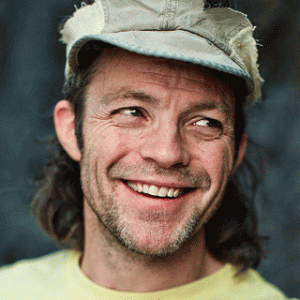 ASJ: The Tower is a compelling read, at times it’s every bit as gripping as books like Jon Krakauer’s Into Thin Air. Did the book pretty much write itself, or did The Tower stretch you as a writer? What was the hardest part about writing it?
ASJ: The Tower is a compelling read, at times it’s every bit as gripping as books like Jon Krakauer’s Into Thin Air. Did the book pretty much write itself, or did The Tower stretch you as a writer? What was the hardest part about writing it?
KC: Whew, I wish it wrote itself. The book stretched me thin, more so than anything I’ve done. I loved the research components, and found them endlessly fascinating, along with the insight into just how bizarre we humans can be with our ambitions, beliefs, and actions. But writing was the hard part. Specifically, most difficult was trying to weave together the complex, intertwined layers into a cohesive story that didn’t unravel into a junk show. I wasn’t confident that I succeeded – I agonized over the details, and my own second guessing practically drove me nuts – but hearing that you found it compelling is great. I’d be delighted it if it reads like it wrote itself.
ASJ: You have been on the top of Cerro Torre. Given today’s improved weather forecasting, can you recommend it as a realistic objective for strong Yosemite climbers? Just how dangerous is it?
KC: Nah, can’t recommend it to anyone who doesn’t have extensive alpine climbing experience. That’s far more important, I think, than having solid rock climbing skills. While the latter helps with performance, the former keeps you alive. The weather forecasts and the accessibility of the massif can easily lead to the unintended effect of complacency. Cerro Torre is still incredibly serious, with a very dangerous glacier approach, and requisite ice climbing even on routes that are primarily rock. In most of the recent seasons in the Chalten Massif, for example, climbers have died on outings that are far less serious than the safest routes on Cerro Torre. The mountains remain wild places, even with the weather forecasting. That’s part of their beauty and allure.
ASJ: Do you believe that Maestri will ever go the route of Lance Armstrong and come clean, or do you think he will take his lie to the grave?
KC: I suspect he’ll take it to the grave. One of the many ironies related to Maestri’s story, and the anguish Cerro Torre causes him, is how his defenders seem to think they’re protecting him by perpetuating the myth. But the path to peace is surely tied to truth. Armstrong, it seems, didn’t have much choice but to come clean. Alpine climbing, on the other hand, is usually conducted without witnesses, has no regulatory bodies, and relies heavily on personal integrity in reporting what happened – which, of course, leaves an open window for those inclined to perpetuate their delusions.
ASJ: I really enjoyed your book, but what are other reviewers saying? Have you heard anything negative from the Maestri camp?
KC: Thank you, I’m glad you enjoyed it. So far, so good with the reviews. But it’s early. I expect plenty of negative reactions; reality is no match for the power of belief.
ASJ: What’s next for Kelly Cordes? Climbing projects? Writing projects?
KC: I’m pretty burned out on writing right now, and am eager to spend more time climbing (rather than writing about climbing). I’ve always valued my leisure time, which mostly means time in the mountains, and time spent climbing. Not being “productive,” in the parlance of our times. So, next: Climbing, goofing off, and drinking margaritas. After all, they say a person should do what they do best. ![]()
For more information about The Tower visit Patagonia Books.
Also check out www.kellycordes.com

Kelly Cordes during an ascent of Fitz Roy in 2013, with Cerro Torre framed in the background. (Craig Scariot)
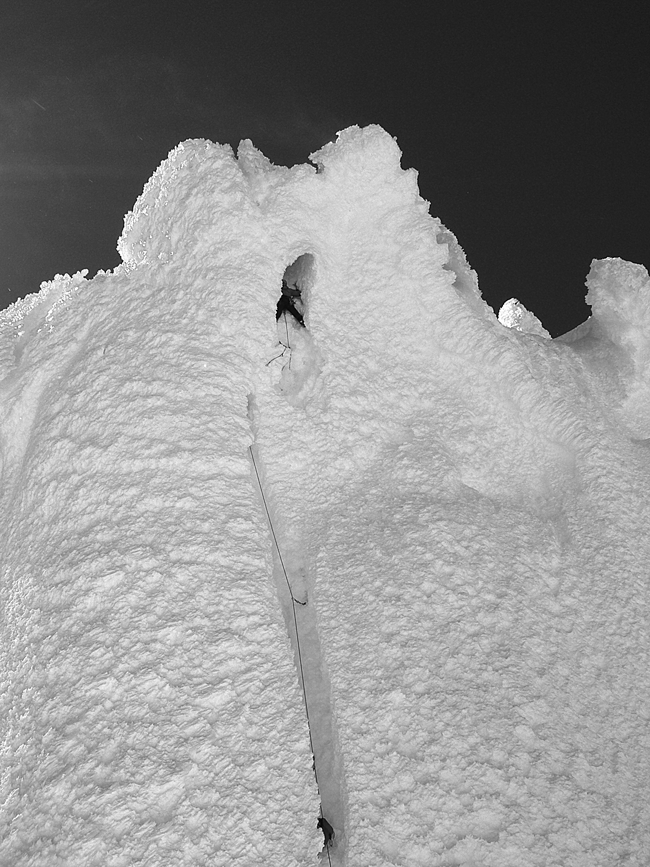
Colin Haley tunneling through the crux pitch right below the summit of Cerro Torre. Photo: Kelly Cordes

